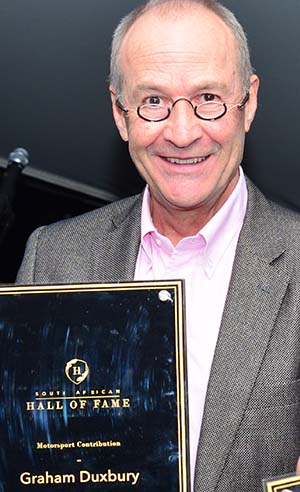Honda’s planned Formula One exit at the end of 2021 comes as no surprise. It has entered and exited F1 four times since the 1960s.
 By Graham Duxbury
By Graham Duxbury
Honda’s objective has always been to present its engineers with a challenge. When this goal is realised, its presence in F1 seems to lose relevance.
In 1964, shortly after it produced its first road car, Honda entered F1. Its engineers drew on the company’s proven motorcycle engineering philosophies in designing the RA271 which was radically different from its F1 contemporaries.
The car featured a transverse-mounted, high-revving V12 engine with 12 separate exhausts and 12 Keihin carburettors – motorcycle-style. When fitted with fuel injection it was acknowledged as the most powerful engine of the era.
Richie Ginther’s win in the 1965 Mexican Grand Prix underlined Honda’s rise from backmarker to race winner in just two seasons. The success was a feather in the cap of development engineer Yoshino Nakamura who would go on to a rewarding career at Honda before his passing in 1994, age 76.
Having achieved a win, there was talk of Honda leaving F1. It was Nakamura who persuaded company chiefs to remain. However, after a lacklustre 1966 season, thanks to a new, over-weight car (the RA273), Nakamura asked Lola’s Eric Broadly to help design its replacement’s chassis.
The Honda RA300, based on a Lola IndyCar, was soon dubbed the “Hondola” by the press while its Honda-engineered 3-litre V12 engine – produced under the auspices of Nakamura and engineer Shoichi Sano – was recognised as one of the most powerful on the grid. With it, Surtees won the 1967 Italian GP.
Nonetheless, this was the RA300’s only win. After the 1968 South African GP it was superseded by the RA301 with which Tadashi Kume was associated as senior engineer. Kume would go on to head the Honda Motor Company.
In tandem with the RA301, Nakamura and Sano (encouraged by Soichiro Honda, who perhaps remembered the failure of the podgy RA273), produced the lightweight RA302. It featured an innovative air-cooled V8 engine (relying on motorcycle influences) and a revolutionary chassis made of thin sheets of ultra-light magnesium (one of the most volatile metals).
With Surtees unconvinced of the car’s potential, Honda hired Frenchman Jo Schlesser to debut the RA302 in the ’68 French GP. Unfortunately, he crashed, puncturing the fuel tank. The resultant fire was intensified by the magnesium chassis catching alight. Schlesser died in the inferno.
Even though a second RA302 was built and used by engineers as a test bed, Honda withdrew from F1 at the end of 1968 due, it claimed, to difficulties selling road cars in the US. Schlesser’s fatal accident was also noted.
Honda’s return in 1983 as an engine supplier presaged the company’s most successful period in F1. After winning races in 1984 and 1985 it claimed the Constructors’ Championship every year between 1986 and 1991 with the Williams and McLaren teams, and the Drivers’ Championship every year from 1987 to 1991 with Nelson Piquet, Ayrton Senna and Alain Prost.
Honda withdrew from F1 in 1992 “having achieved its targets”. It had also produced the only V12 engine to win a F1 world championship – the RA121E from 1991.
Eight years later Honda reappeared, providing V10 engines to the British American Racing (BAR) team – which it subsequently bought. Unsatisfied with performances, incumbent designer Geoff Willis was replaced by Honda’s Shubei Nakamoto. Soon after, Jenson Button won the 2006 Hungarian GP. Then Honda announced its exit from F1, citing the adverse effects of the global financial crisis.
Honda returned to F1 in 2015 as a supplier of new-generation V6 turbo-hybrid powerplants to McLaren. Unfortunately, the units were plagued by unreliability, earning a public rebuke from Fernando Alonso. Honda then severed ties with McLaren, forming associations with Toro Rosso (AlphaTauri) and Red Bull Racing.
A series of powerplant upgrades followed, masterminded by Honda engineers Yasuaki Asaki and Toyoharu Tanabe. They were inspired by the design of Honda’s HF120 jet engine when it came to unlocking performance from the complex MGU-H, a key element of the hybrid energy recovery system.
Thanks to these and other developments, Honda engines won again in F1, most recently with AlphaTauri at the 2020 Italian GP.
Honda says its imminent departure from F1 is due to a re-focus on the “realisation of carbon neutrality by 2050”. While it might be accurate to say Honda has achieved its current goals, perhaps the more restrictive 2022 F1 engine rules package, impeding any form of innovation, is also a key motivation?
